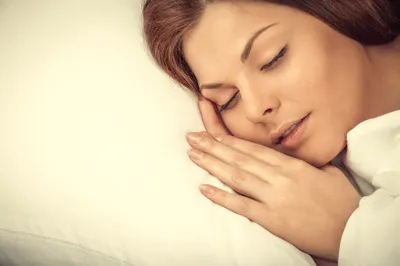As far back as I can remember, I’ve been a stomach sleeper. Try as I may to fall asleep on my back or in the fetal position, I always wake up flat on my belly with my face smashed into my pillow (which apparently causes wrinkles). If you’re not a stomach slumberer you’re likely wondering “What’s the big deal?”.
However, this article is for my fellow stomach sleepers who’ve been told by everyone—from mom to your doctor to your massage therapist—that stomach sleeping is the worst possible sleeping position…
1. Calling All Stomach Sleepers
According to the Sleep Assessment and Advisory Service, roughly 7-percent of the population is guilty of stomach sleeping—much of which is enjoyed in slumber with the arms wrapped around a pillow with the head turned to either right or left side.
While quite a few enjoy sleeping on their bellies, the AAS explains that stomach sleeping has long garnered a bad rap for developing lower back, neck, and spinal issues.
2. Stomach Sleeping: The Bad News
The Mayo Clinic explains that stomach slumber is considered a poor sleeping position because it doesn’t support the natural curvature of the spine. Instead, this prone sleeping position fattens and stresses the spine.
Flat lining the neutral spine position is considered dangerous because most of the weight when maintaining this position rests on the mid-back, placing undue strain on the mid- and low-back, neck, and even cutting off sensation and causing tingling or numbness along the body’s main ligament and nerve route (the spine).

3. Stomach Sleeping: A Bit of Good News
Despite the stress placed on the back and neck during stomach slumber, this 2015 Livestrong.com article does note some bonuses connected with stomach sleep. For instance, stomach sleeping tends to reduce snoring (for those who suffer from sleep apena) and aid digestion.
While that’s pretty much the only list of plusses, a recent article from Prevention.com notes that sleeping belly down and head titled to one side won’t usually cause issues for health adults…the key word here is “healthy”, meaning no history of lower-back, neck, or spinal issues.
4. Existing Back Pain
If you suffer from existing back or neck pain, stomach sleeping is likely a habit you’ll want to break. Like a re-occurring bad dream, stomach sleeping will only exacerbate existing lumbar spine pain and issues if you already have them.
If your back aches already, stomach slumber will over-extend the lumbar spine, causing nerve and ligament strain to already weak and damaged areas.
5. Switching Up Sleeping Habits
As mentioned, swapping one sleeping position for another is easier said than done. However, you can urge your body to stay in the position you fall asleep in by using pillows and other sleep aids (bolsters) as support.
For instance, if you want to train yourself to fall asleep on your back, place a pillow or rolled up towel under the backs of your knees. This will take any stress off your lower back and promote a natural curvature of the spine. Placing a pillow between your legs in the fetal position, likewise, reduces any strain on the spine.
6. Sticking to Stomach Sleep
If you can’t, no matter how hard you try, break your inclination to sleep belly down, face smooshed into your pillow, you can reduce lower back pain with proper pillow positioning.
Try sleeping with a pillow beneath your belly. This will prop up your mid back to promote natural curvature, and reduce the stress and pain on your spine. If pain persists, talk to your doctor about sleep aids, medical testing, and possible treatment options for pain.








